Tired of SEO seeming like a Pandora’s Box or some type of sorcery? We already demystified SEO by debunking search engine optimization myths, but it’s time to learn how to write about content creation that ranks high on Google.
From marketing leaders to small businesses, this guide is for those who are ready to leave preconceptions behind and master writing SEO-friendly content.
It’s time to do that? Don’t you think? After all, 70% of marketers think SEO is better than PPC (pay-per-click).
Spoiler alert: We think so too.
Have you neglected SEO out of fear of not being good enough at it? Or of not understanding it?
Then, it’s time to overcome those fears and see search engine optimization as what it truly is… a series of activities that can bring massive results!
Why Do You Need SEO?
At this point, SEO has become some kind of mythical figure on the internet. With so many myths around it, it’s no wonder that people are confused about SEO-friendly content and its importance.
From SEO being “dead” to it being the holy grail of content marketing, opinions vary, and it is easy (and understandable) to get confused.
Still, there’s no need to sweat it as we are here to help you master search engine optimization.
What Is SEO?
Breaking news: SEO is not some type of sorcery. You don’t need to be Harry Potter to master it. However, what you need to do is keep reading this guide.
That being said, search engine optimization is the process of optimizing your content for search engines so that you rank higher in search results and get more organic traffic.
More specifically, the utmost priority of content is answering search intent hence search engine optimization is rather about understanding what your target audience wants, the keywords that they use, and the content they prefer.
| Tip: It’s easy to get lost in recommendations and guidelines. However, you must not forget your utmost priority: your audience.Apply this user-centric approach to SEO if you want to take your content from ordinary to extraordinary. After all, SEO-friendly content is all about creating content for users, not for search engines. |
Why Bother with SEO?
Like any other thing in life, search engine optimization is difficult only if you don’t have a strong enough “why”. If you are still trying to define your WHY, we are here to offer you some ideas:
- Drive User Engagement
Search engine optimization drives organic traffic, hence visitors arrive on your website because they are actually looking for something. Naturally, these types of visitors are more likely to engage. Besides, if your content is high-quality and insightful, the chances of your visitors staying for longer on your website increase.
- Increase Credibility and Trust
Let’s face it, if Google perceives a website as an authoritative and credible source, the chances of the website actually being like that…are pretty high. That being said, to rank high on Google, a website should be trustworthy and authoritative. Hence, ranking high on SERP (search engine results page) will position your website as a credible source.
- Reach a Wider Audience
While segmenting your audience is a must in the digital era, with SEO, you can target multiple audiences at once. By focusing on keywords rather than demographics, SEO aids the targeting of any individual with related search intent, no matter where they may be in the buying funnel.
- Maintain 24/7 Promotion
Let’s get some things straight. Not only is SEO free, but it also provides 24/7 promotion. This way, you won’t ever have to “cut down” on SEO because of increased costs. In fact, organic search drives 51% of traffic, while paid search only 10%.
- Enhance Website Usability
While Google’s main priority is to answer search intent, it also cares about site speed, mobile usability, or linking structures. Hence, while you may think that you are optimizing your website for search engines, you are, in fact, also improving your website’s usability.
Search Engines 101
Search engines are software systems that are designed to help people find answers to their search queries on the internet.
However, according to Statcounter, Google accounts for 91.4% of the global market share. So, it’s fair to say that this section could be called “Google 101”
How Do Search Engines Work?
| Crawling | Indexing | Ranking |
| The process through which search engines continuously scan and scrutinize content on the internet. By using crawlers aka bots or spiders, search engines discover new pages on the internet mainly by following links from pages they already know about. Then, the page URLs are added to a list | Once a page has been crawled, it is analyzed by Google. From images to content or videos, Google analyzes everything in order to understand what the page is about, so it can categorize the page and store it in “Google index” ❗If you want to find out more about indexing, check out our article on the best methods to index your website on Google. | Ranking is the search engine stage we might be the most familiar with. When a user searches for something, search engines scrutinize indexed pages for the best fit for the search intent. Usually, the higher the website it ranks, the more relevant it is to the search query.According to Google, when choosing the best results, many factors (language, location, past queries) are taken into consideration |
Search Engines Ranking Factors
It’s all fun and games until it comes to Google algorithm. Thanks to this complex system, Google can instantly retrieve the most relevant data and deliver suitable results for a search query.
Sounds pretty simple, right? However, while there are 200 SEO ranking factors, Google is constantly updating the algorithm.
However, here are some of the main factors that Google takes into consideration:
- Content: Keyword stuffing is no longer enough, your content should be valuable if you want it to rank high on SERPs. Not only should it answer user intent, but it should also be up-to-date and cover the topic in-depth.
- Backlinks: If trustworthy and high-quality websites link to your websites, your website’s authority will increase in the eyes of Google
- User intent: User intent or search intent is essentially what a user is looking for. So, if you want to rank for a certain topic you need to understand what users are looking for as well as the different keywords and synonyms they use.
- User experience: How users interact with a web page “beyond its pure information value” matters to Google. So, you should go that extra mile and focus on load time as well as on mobile-friendliness or on how secure your site connection is.
- E-A-T: “Expertise, authority, and trust” is one of Google’s most important ranking factors. For example, an “About” page or testimonials are great ways to prove your expertise. Google will also look at the domain age and links from other websites.
- Keyword optimization: While keyword stuffing is a big no, keywords are still crucial as they are what the audience is searching for. Therefore, you should include them in your title tag, URL, meta description, headings, and image alt texts.
- Website structure: Your website should be crawlable if you want search engines to find it easily.
SEO 101
While the only big mistake when it comes to SEO is not doing search engine optimization, having an SEO strategy will certainly help with avoiding other possible problems. You can’t do SEO overnight and while it means going that extra mile, an SEO strategy is necessary if you want long-term results, not just irregular boosts.
| Don’t forget ❗: SEO is a continuous effort. If you want to improve your search engine ranking, the work never stops. |
On-site SEO
What Is On-site SEO?
Spoiler alert: it’s not keyword-stuffing
Having said that, on-site SEO, aka on-page SEO, encompasses all the practices that can be conducted within the website to improve how it ranks on search engines.
Google algorithm is constantly being developed to better understand what users are searching for, but also to deliver results that match the search intent. That being said, through on-site SEO, you are essentially telling search engines what your site is about.
On-page SEO, unlike off-page SEO, is in your control, so if you want to keep up and maintain a forefront position in search engines, you should make it a priority.
What Are The On-site SEO Key Elements?
Firstly, you need to understand that in order to successfully optimize your website, you’ll need to do keyword research so that you better understand user intent. We’ll go into keyword research more in-depth, but until then, check out our article on keyword research and page optimization!
- Text:
- According to Google, “search algorithms look at many factors, including the words of your query” and they also have synonym systems that help the search know “what you mean by establishing that multiple words mean the same thing”
→ while keyword stuffing should be avoided, you should definitely include your target keywords in the first 100 words and throughout the entire post, especially in headings, and image captions, or alt text.
- Write short paragraphs and use subheadings to break down longer sections
- URL
- Include 1-2 keywords in your URL to inform both search engines and users of what your content is about
- Use hyphens between words for readability
- Keep your URL short, simple, and relevant
- Title Tag
- Include the primary keyword at the beginning of the title
- Keep the title short, so it doesn’t get cut off in SERPs (search engine result pages)→ around 55-60 characters
- Don’t use all caps
- Write an informative yet compelling title
- If you don’t want Google to think that you have duplicated content, you need to give different titles to each page
- Meta Description
- The meta description gives both Google and users “a summary of what your page is about”
- You should keep it short (around 155 characters) and to the point
- Avoid keyword stuffing but include primary keywords
- Images
- Optimize your images by giving them brief but descriptive file names
- Use file types that are commonly supported, such as JPEG, PNG, GIF
- Use alt tags so that search engines understand what the image is about
- Header Tags
- Wrap subheadings in header tags (H2, H3…) to break down your content→ help both users & Google better understand the content
- Try to include long-tail keywords in header tags
- Internal Linking
- Internal links help Google understand the structure of your website
- Help visitors navigate your website more easily and discover more of your content
- Use a descriptive anchor text
Off-site SEO
What Is Off-site SEO?
Off-site SEO aka off-page SEO refers to the practice outside your website that influences your ranking in SERP. Unlike on-page SEO, this isn’t in your control.
What Are Off-site SEO Key Elements?
- Backlinks
- Authority is a factor that Google takes into consideration, and what better way to prove that than by getting a backlink from a relevant and authoritative website?
- Link equity= the value that a website provides to another site by transferring authority through a link
- Links are dofollow by default, but links that have rel=”nofollow” added to the code aren’t taken into consideration by Google, as they tell Google not to pass link equity to the linked page
- Not all pages have the same value: a high-quality backlink would be: relevant and from an authoritative website
- Check out our article on link-building to discover ideas for generating link-building
- Guest Blogging
- Prove your expertise and promote your brand by writing as a guest for another website
- If done right, guest blogging will not only position you as a thought leader in your industry but will also help with reaching a larger audience
- Social Media
- If you want to increase brand awareness and encourage, social media marketing is the way to go. In fact, 73% of marketers think that their efforts with this type of marketing have been “somewhat effective” or “very effective”
- Forums
- Another great way to position yourself as a thought leader in your industry is getting involved in conversations related to your industry on niche forums or platforms such as Reddit or Quora.
- Get involved in these online communities by replying to threads, offering solutions for industry-related problems, and linking your content when suitable
Technical SEO
Photo source: Unsplash
What Is Technical SEO?
The behind-the-scenes of SEO, technical search engine optimization is underrated, yet fundamental.
Technical SEO is the process that makes it easier for search engines to crawl and index websites. Ultimately, technical SEO is concerned with increasing organic traffic by meeting the necessary technical requirements of search engines.
Skipping technical SEO may result in all your hard work going to waste, as there’s no use in your content being high-quality and SEO-friendly if search engines won’t be able to crawl it. After all, SEO means more than words.
Technical SEO Checklist
- XML Sitemap
- An XML sitemap is essentially a map for Google as it includes all the pages on your website that are available to be crawled by search engines
- According to Google, huge websites, websites with large archives, new websites that don’t have a lot of backlinks, or “websites that use rich media content” are the ones that need an XML sitemap. However, as Yoast emphasized, all websites would benefit from having an XML sitemap, as this way you ensure that search engines find every page on your website.
- HTTPS
- The visitors’ security is one of Google’s priorities, and it should also be one of yours
- HTTPS is an extension of HTTP that is used for secure communication over a computer network
- Page Speed
- A confirmed ranking factor, page speed is also crucial for user experience as 53% of websites are abandoned if a mobile page takes longer than 3 seconds to load
- From implementing cache plugins or compressing files to using content distribution networks, there are multiple ways to reduce page load time
- Site Architecture
- Your site’s architecture represents how your website is organized.
- By optimizing your site’s architecture, you make it easier for bots to understand the relationship between your pages, enhancing the ability of search engines to crawl and index your content effectively.
- Implement a hierarchical structure as it shows Google which pages are the most important
- Breadcrumb List
- Breadcrumb lists help with navigation as they guide users on your website
- A breadcrumb trail is also an indicator of a page’s place in the website’s hierarchy
Your Content Optimization Strategy for 2022
We’ve already established that writing SEO content is not some type of sorcery. However, the real goal is to write engaging and insightful SEO content. That’s what we are aiming for and what you will be able to achieve with these simple steps.
- Create Buyer Personas
Search engines are all about answering search intent. But how can you do that if you don’t know your target audience? The more you know about your target audience (or target audiences, since audience segmentation is also quite helpful), the more insightful and valuable will be the content you create for your target audience.
Understanding both your audience’s pain points and desires as well as its behavior and interests is a necessary step in creating content that matches user intent.
First of all, with audience segmentation being a necessity of the digital age, it is also imperative that you create multiple buyer personas- one for each audience segment. There is no set number as, after all, this depends on how big your business and your target market are. However, nowadays, marketing content to three audience segments is the norm.
From demographics and psychographics to behavior and customer journey data, all of these will help you create a well-rounded image of your ideal buyers. If you want to find out how to gather these data, check out our article on the importance of audience segmentation.
- Conduct Keyword Research
Once you have created buyer personas, you need to conduct keyword research so that your content actually reaches the audience that it is targeting. Essentially, from a user-centric standpoint, keyword research is just a method of better understanding your audience, and what your audience wants to find out.
Besides, keyword research will help you understand what keywords are ranking as well as what keywords your competitors are ranking for. While this may mean going the extra mile, the results will be worth it. Keyword research will help you learn more about your audience, your competitors but also about your niche.
| ❗Keyword research is a crucial step in writing SEO-friendly content. Our guide on keyword research contains all the information you need, so make sure you check it out! |
- Plan Your Content & Switch It Up
We’re the first ones to advocate the importance of an airtight plan. Here are some reasons why we are firm believers that a plan can take your content from ordinary to extraordinary:
- Makes scheduling seasonal content easier→ You’ll be covered all year round
- Gives you more flexibility→ Ironically, having a content plan, gives you more space to experience different types of content and to exploit those random bursts of creativity as your main content is already set
- Helps with consistency→ Planning your content will help you stay consistent. Having some content ideas set aside for the days when you aren’t feeling particularly creative will boost your consistency
That being said, it is equally important to switch your content up. Did you know that 94% of marketers think that videos have made users understand services or products better?
With videos being more commonly used than blogs and infographics, it is becoming more and more obvious that only written content isn’t enough anymore. Therefore, you need to prioritize producing different types of content, such as videos or podcasts. And what better way to prioritize that than by scheduling these productions in your content plan?
- Combine Evergreen & Seasonal Content
Are you ready to have the best of both worlds?
Well, contrary to popular belief, seasonal and evergreen content aren’t contradictory; they are complementary. They are both equally important, hence if your aim is to maximize your business’ results, you should incorporate both types of content into your strategy.
| Evergreen Content Stays relevant for a long time, in fact, it is also known as “timeless” content. Content that maintains its relevance and value even years after the publishing date Builds authority Read more about how to write evergreen content that stands the test of time! | Seasonal Content Is time-based (relating to a season or month) or event-based (related to a holiday) Generates Buzz Well-targeted seasonal content can increase sales Read more about setting up a seasonal content strategy! |
- Repackage Your Best Content
What better way to maximize your content than by repackaging it? As Kara Adams, CAE, client success manager at learning technology company Blue Sky eLearn, told AssociationsNow, repackaging is “a good way to remind members and nonmembers about the relevance of the association.”
Your content, especially the evergreen pieces, is informative and valuable, so in order to save yourself some time, and ensure that this content remains relevant in the eye of the public, you can recycle or repackage it. Here are some ways to do that:
- Create an infographic
- Re-market your timeless pieces on social media
- Produce a video or a podcast with the information from your evergreen written pieces
- Create an e-book with your best evergreen pieces
- Prioritize Internal Linking
Internal links are links on your website that link to another page of your website. Not only will internal linking help Google understand your website better, and, consequently, rank it higher, but it will also keep readers engaged. For example, with internal links, you could guide your visitors towards related content.
Like the search engines section highlighted, Google discovers content by following links from websites it already knows and then ranking it. A post that has a lot of links is perceived as trustworthy and valuable.
- Regularly Perform an SEO Audit
An SEO audit is essentially an evaluation of your website. After all, SEO is a continuous effort, so constant evaluations are a must.
The complexity of the audit varies, but here are some simple steps that you can go through on your own if you want to evaluate your website.
- Do a site crawl: a site crawl is a great way to identify any possible issues you might not have noticed while publishing your pages.
- Check if your website is indexed: you can do this by entering “site:yourwebsite”. You can find out how many of your pages have been indexed from the number of shared search results. Or, you can check the index status in Google Search Control
- Perform an on-page SEO check: From meta description to URL, title tags, and even paragraph length, check if your website is truly optimized for search engines.
- Check for thin or duplicate content: Google hates duplicate content, on your website and, especially, on multiple pages. You can use Copyscape to identify any duplicate content.
- Verify page speed: With tools such as Google’s Page Speed Insights, you can verify your website’s load time. However, there will always be room for improvement when it comes to website page load speed, so optimize your images and videos, reduce HTTP requests or configure the server settings.
- Test mobile-friendliness: Did you know that 60% of smartphone users employed search results, like “click to call”, to contact a business directly? Use the Mobile-Friendly test to see how mobile-friendly your website is.
- Engage with Your Audience
Something that we cannot emphasize enough? You are creating content for humans, not for search engines. It is equally important to maintain this audience-centric approach even after the keyword research or the buyer personas are finished.
That being said, you can check what type of content performs best, but it is equally important to communicate with your audience, invite your visitors to comment, and engage with them.
Now Back at You!
“What is SEO content?” is a question no longer unknown to you. Congratulations!
Are you ready to offer search engine optimization the attention it deserves? Trust us, it will be a game-changer. Once you invest in your website and prioritize your content, your business will flourish.
And isn’t that what we all want?
Are you ready to ditch your fears and take your content to the next level with SEO? Then, you are in the right place.
Want Me and My Team to Help You Become An SEO Expert?
We believe that there isn’t such a thing as one-size-fits-all when it comes to SEO, hence our approach is client-centric and our SEO consulting services are designed with you in mind. With CadenceSEO, the mystification of SEO will become a thing of the past.
So, what are you waiting for? Book a free consultation with us today!






